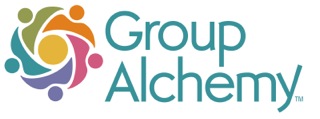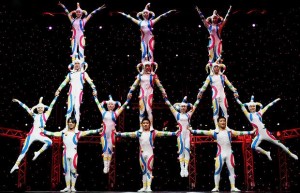Lately, as Group Alchemy grows, I’ve had to spend a lot of time on a thousand administrative details and difficult tasks. Every day has felt like a long “to do” list of jobs that support my true work but aren’t “it.” They are necessary and important, but they don’t feed me the way that actually working with a group and coaching my clients do.
When I sat down to write this essay I was focused on getting another one of those tasks off my list – “I’ve got to get the July bulletin written.” I was in a hurry, feeling the urgency of many other things that needed “doing.”
It was a painful afternoon and not very productive. Though I had a lot of great ideas, bringing them together in some coherent form was very difficult. It felt really hard and all I could think about was how much I hate writing… I could not find the appreciation for a challenge in service of a higher purpose.
I was as persistent as ever so I drafted an essay and closed the computer, very unsatisfied and frustrated. And I admit that those feelings tainted the rest of my day. It wasn’t until later that evening that I realized what was happening.
I was running on empty because I had gotten so focused on “solving problems” and “getting things done” that I had lost the connection with my larger vision. I couldn’t find the connection between the immediate task – in this case writing an alchemist bulletin to send you – and the bigger inspiration and purpose – making a contribution to the work that you are doing and fostering the alchemy in your groups.
I’m reminded about how easy it is to get mired down in the details of getting our work done and losing sight of what we’re really up to – the context for why the specific task has meaning. Many of the jobs we must do day-to-day are not glamorous and might be removed from the more exciting and nurturing parts of our work. Those tasks can easily feel like burdens rather than opportunities that feed our goals and dreams.
It’s like the fog that creeps into the San Francisco Bay many evenings, always ready to move in when the conditions are right but not always welcome. In our work these conditions include; being so busy we feel overwhelmed, forgetting to create experiences to re-member what our true passion is, not taking time away from the work to replenish our spirit, failing to share experiences with our co-workers and partners that re-ignite our shared passion for what we do. As I cleared my own fog around getting this month’s Alchemist out to you, I was reminded of just how vigilant we must be to have powerful practices to get re-inspired.
Powerful action takes commitment and commitment requires inspiration. Without a strong connection to the original inspiration, tasks quickly become burdens. It slows groups down, lowers morale and decreases satisfaction. You can hear it in the language of your group. What you hear is; ” I have to… ,” “We should….” When people are present to inspiration you’ll hear things like; “How about…,” “I can imagine …,” and “What if we….”
The question is, are you still present to the inspiration that you created? If you find that it truly isn’t alive for you anymore, maybe it’s time to move on. But it’s easy to confuse that with not being present with that inspiration. Frustrations, resentments, bad feelings and overwhelm can block access to your inspiration so you’ll want to check that out.
Ask yourself, is there something that needs to be cleaned up or completed that will allow you to return to your inspiration? Or, maybe you just need to declare your inspiration – to yourself, to another, to your group, in order to remind yourself of what it is you are up to.
Inspiration is an experience, not an idea. When you are present to your inspiration, you will feel the passion of the possibility. It doesn’t exist in our heads.
We need others to help us reconnect. When you’re stuck, your co-worker, a partner, an associate can serve as the reminder of what you are really up to. This is exactly what helped me to get unstuck. I spent an hour in the energetic and inspiring Toastmasters group I belong to where I had the opportunity to talk about what I’m excited about. I came away re-charged. That inspired a conversation with my partner who also reminded of my inspiration and pop – I broke through the logjam of burden. This is the potential in groups. Other people can serve as your reservoir for your inspiration.
We need routine practices to reconnect. Specific practices, personally and collectively, that help us experience what inspires us are crucial to call us back from our busyness and prevent getting stuck. Personally, it might be a short meditation, or a visualization, or a connection with someone that inspires. In the group, it can be a visualization, a brainstorming session about ideas, or an explicit story sharing a success.
I think I’ll be doing a creative visualization and having a renewal conversation with my partners from now on before I sit down to write these articles!
What techniques work for you to reconnect with your inspiration that justifies all the tasks and activities you must do? A meditation? A reading? A conversation with someone who shares your commitment? Decide together what you will do as a group to stay connected to your inspiration.
Let us know what you decide. We might be able to take a page out of your book.





